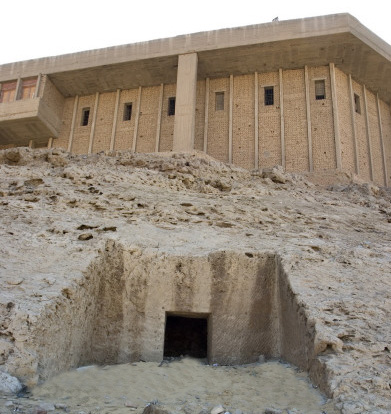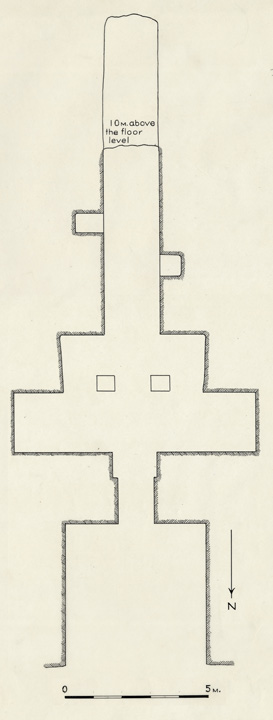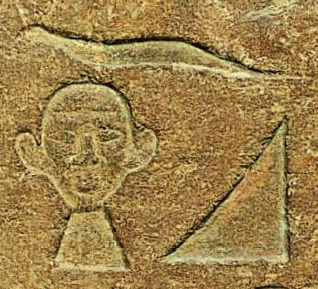Uncovering the Second Solar Boat at the Great Pyramid Today | drhawass.com – Zahi Hawass
June 24, 2011
Uncovering the Second Solar Boat at the Great Pyramid Today
via Uncovering the Second Solar Boat at the Great Pyramid Today | drhawass.com – Zahi Hawass.
Uncovering of the second solar boat set for June 22
June 21, 2011
Uncovering of the second solar boat set for June 22
via Youm7 English Edition | Uncovering of the second solar boat set for June 22.
Press Release – New Discovery at Giza
November 3, 2010
An Egyptian archaeological mission directed by Dr. Zahi Hawass, Secretary General of the Supreme Council of Antiquities (SCA), has discovered a large mud brick wall dating to the reign of King Thuthmose IV (1400-1390 BCE). The wall was uncovered in the area located in front of King Khafre’s valley temple on the Giza plateau.
Press Release – New Discovery at Giza | drhawass.com – Zahi Hawass.
The “new” tomb of Rudj-ka at Giza
October 22, 2010
Recently discovered south of the Southern Mount at Giza, the tomb of Rudj-ka may be one of several to turn up eventually in this area. Some recent links:
To date, one of the largest collections of images was posted recently on Zahi Hawass’s Facebook page.
Press Release -Discovery of the tomb of Rudj-Ka | drhawass.com – Zahi Hawass.
A Fifth Dynasty tomb (2465 – 2323 BC) of the priest Rudj-Ka was recently uncovered in an area south of the pyramid builders’ necropolis at Giza.
Robot could open door to Great Pyramid secrets | Crave – CNET
August 12, 2010
VIDEO – Laser Scanning the Sphinx | drhawass.com – Zahi Hawass
February 5, 2010
New Tombs Found at Giza
January 11, 2010
Grand Egyptian Museum | drhawass.com – Zahi Hawass
January 4, 2010
More on the So-called “Caves” at Giza
September 16, 2009
Recently Andrew Collins and Nigel Skinner-Simpson have been in the press concerning “newly discovered” caves and catacombs underneath the Giza plateau. An informative short blog entry by Zahi Hawass, Secretary General of the SCA, has also recently appeared. Dr. Hawass sets the record straight, and indicates the location of the tomb in question, an undecorated rock-cut series of rooms west of the pyramids and the Western Cemetery (see fig. 1; to zoom in on this Quickbird satellite image on the Giza Web site, click here).

Figure 1. Quickbird satellite image of the Giza plateau, showing the location (marked in red) of two of the rock-cut tombs in the northern cliffs (January 5, 2009).
He mentions the excellent reference work known in the field as the Topographical Bibliography by Porter and Moss. The Giza pages from volume III of Porter-Moss are available on our Giza Digital Library page. However, that volume was last updated in 1974. The Giza Web site contains much more up-to-date information on the Giza plateau, and includes links to photographs, drawings, plans, manuscripts, and other documents absent from the Porter-Moss volumes.
Members of the Harvard University-Boston Museum of Fine Arts Expedition, directed by George Reisner, were indeed aware of several rock-cut tombs during their excavations between 1904 and 1947. One of them lies about 160 meters north of “Harvard Camp,” as the Expedition’s dig house was then called. The tomb in question is one of three rock-cut structures in the cliffs, numbered by the Expedition as NC1 (for “North Cliff”), NC2, and NC3. In fact, Reisner designated NC3 as the air raid shelter for his Egyptian workmen during World War II. (Reisner himself and other crew-members used tombs on the east side of the Great Pyramid when the air raid sirens sounded.) I recently visited the area with two sons, now in their 70s, of one of Reisner’s foremen (see fig. 2).

Figure 2. The facade of rock-cut tomb NC3, looking south (Peter Der Manuelian, January 16, 2006; PDM_06228).
The view from the façade looks north towards the location of the future Grand Egyptian Museum site and greater Giza (see fig. 3).

Figure 3. The view northwards from the entrance to tomb NC3 (Peter Der Manuelian, January 16, 2006; PDM_06235).
The Harvard-MFA Expedition also produced preliminary plans of these North Cliff tombs. Tomb NC2 does not yet have an individual tomb record on the Giza Archives Project Web site, but it will eventually, as will its companions NC1 and NC3. In the meantime, one archaeological drawing at the MFA in Boston, by Expedition draftsman Alexander Floroff, is dated April 29, 1939. The inked version of this pencil drawing (figure 4 below) shows the façade of NC2 (see figure 5), the pillared chamber behind, and the long corridor extending further to the south.

Figure 4. Plan of rock-cut tomb NC2 by Nicholas Melnikoff (1939). Courtesy Museum of Fine Arts, Boston.

Figure 5. Entrance to tomb NC2 during recent SCA excavations, with the pyramid of Khafre in the background (SCA photo).
A new clue as to the possible original date of this rock-cut tomb is provided by a pencil note added to the inked version of this plan, drawn by Nicholas Melnikoff. It is written in the hand of MFA Egyptologist William Stevenson Smith, and notes: “Rock cut tombs due north of Harvard Camp. Used as air raid shelters during War. In 1930 I saw traces of painting on columns in central one. Had the idea that this was an 18th Dyn. tomb or N.K. W[illiam] S[tevenson] S[smith] 1946” (see fig. 6 below).

Figure 6. Handwritten notation by William Stevenson Smith added to drawings of tombs NC1, NC2, and NC3 (1946). Courtesy Museum of Fine Arts, Boston.
Old plans and notes such as these indicate how valuable archaeological archives can be in reconstructing the history of the Giza Plateau. In fact, we are preparing about 5,000 additional archaeological drawings from the MFA for the Giza Web site before the end of 2009. And more documents, from our partner institutions in Berkeley, Berlin, Cairo, Hildesheim, Leipzig, Philadelphia, Turin, and Vienna, are on the way. Our work is an international collaboration that is steadily growing to cover the entire Giza Necropolis, not just the Harvard-MFA Expedition concession.
President Obama Visits Giza
June 4, 2009
President Obama toured the Giza Pyramids today. Zahi Hawass showed him around, and also took him into the tomb of Qar, a small Dynasty 6 subterranean chapel with engaged statuary on the east side of the Great Pyramid.

Zahi Hawass tours President Obama around the Pyramids.
This tomb, numbered G 7101, was excavated in 1924-25 by the Harvard University–Boston Museum of Fine Arts Expedition. The tomb is published in Giza Mastabas 4: The Mastabas of Qar and Idu, by William Kelly Simpson, and a free download of the entire publication is available on our Giza Digital Library page.

The tomb of Qar (G 7101), as it appeared shortly after excavation, on December 6, 1924. Today the tomb is protected by a modern roof.
The president saw a hieroglyphic her face, a sign that is carved frontally, and he remarked that the prominent ears reminded him of himself.

The hieroglyphic face sign pronounced 'her' (sounds like "hair") that President Obama saw in the tomb of Qar.
This hieroglyph, often standing for the preposition meaning “because, on account of,” is a standard sign, and was not intended to show the likeness of Qar himself.

Interior chambers and statues in the tomb of Qar, as it appears today.
For more photos of this tomb, simply type “G 7101” in the Search box on the Giza Archives Web site. Qar’s tomb page also contains QTVR 360-degree interactive panoramas showing every chamber of the tomb.
For those ever-curious about hidden chambers inside the Great Pyramid, the wait won’t be much longer. Zahi Hawass plans his next steps for July 2009. Click here for more.
